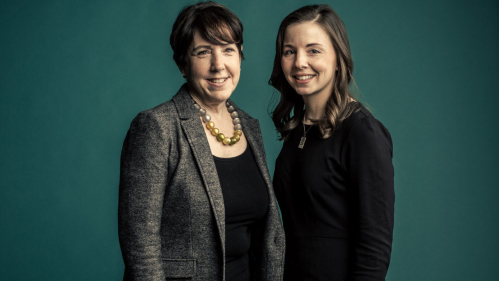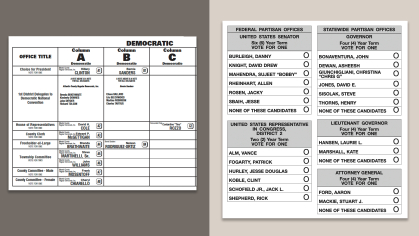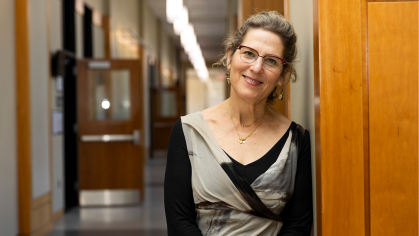As Women Achieve More Firsts in Politics, Waiting for the Day It’s the Norm

Rutgers scholars trace the beginning of the changing tide
A record number of women from both political parties are running for office this year – a watershed moment – say two Rutgers scholars who believe that Democratic vice presidential candidate Kamala Harris’s spot on the ticket will make it more likely that a woman will be elected president in the near future.
“Nominating a woman for vice president shouldn’t be seen as revolutionary, but it is. However, I don’t think we will see an all-white male ticket on the Democratic side again, which makes me feel hopeful,” says Debbie Walsh, the director of the Center for American Women and Politics (CAWP). “We can’t overstate the importance of this moment particularly for Black women – especially young Black women — as a recognition of the importance of Black women, who have been the backbone of the Democratic party.”
In 2018, many – including Walsh and Kelly Dittmar, another CAWP scholar – wondered whether the midterm elections were a one-off for women or a signal that the tide of American politics was finally shifting.
In 2020, the answer is loud and clear, they say, pointing to the record-breaking 583 women, representing both major political parties, who are running for the U.S. House of Representatives – up from the high of 476 in 2018. This upcoming election also marks more firsts for women candidates including a rise in women GOP candidates and the largest number of all-women races, 51, in the nation’s history.
Still, despite the ground gained by women in the last decade, only a quarter of congressional seats are occupied by women, according to CAWP, and there is still much more that needs to be done. “There is disappointment that six women were running in the presidential primary and ultimately an older white man is at the top of the Democratic ticket,” says Dittmar, also an associate professor of political science at Rutgers University-Camden. “You’re seeing a lot of us grappling with that.”
“Women are still seen as a bit of a novelty,” says Walsh. “The fact that we are celebrating firsts in all these states and keeping track of women vs. women races speak to that. When is the last time you heard ‘Oh, it’s going to be an all-male contest!’”
The political playing field won’t be level, they say, until women running for office becomes unremarkable and when gender-specific questions go unasked. Achieving this equity requires stronger support for recruiting and financially backing women candidates, says Dittmar. And barriers on the campaign trail and in political life, such as child care costs, are removed.
“At the same time, a strong case needs to be made that it’s worth it,” says Dittmar. “You can create all the access women need to run, but if they think politics is ridiculous and that you can’t get anything done, they won’t run.”
In 2020, women taking the political plunge are more diverse, in part because of those candidates in 2018, who embraced motherhood, spoke about coming from homes disrupted by violence and shared their experiences with homelessness, addiction and financial insecurities.
Dittmar believes this shift in women’s campaigning styles occurred over time, but credits Hillary Clinton’s 2016 bid for the presidency and 2017’s arrival of the #MeToo movement with upending the way women run today.
“When Hillary Clinton ran in 2008, it was very much about proving she was man enough. In 2016, she runs in a way that’s much more embracing of who she was as a woman and a mother,” says Dittmar. “In 2018, there is this national reckoning with #MeToo and gender equality. And in 2020, you are seeing a continuation of that.”
New in this year’s election is a robust slate of women running on Republican tickets, most of whom eschew identity politics and are pro-life, pro-Trump, pro-guns and anti-socialism.
“Women Republican candidates don’t advocate for a given number of women on boards because to them it’s about getting the best person for the job. They are less likely to focus on being a woman and how that changes their approach,” Dittmar says.
Walsh and Dittmar say they believe the reason why so many Republican women jumped into the race in 2020 is, in part, because while 36 women were elected to the House of Representatives in 2018, only one of them was a Republican.
“They want to have a voice – a very conservative, anti-‘Squad’ voice—in the mix,” Walsh says, referring to the progressive group of Democratic women elected in 2018 that includes Alexandria Ocasio-Cortez.
Walsh and Dittmar say pollsters should not view “suburban white women” as a homogenous demographic. The politics of this varied group swings left or right depending on age, education, economics and sexual identity, while Black women are considered to be the most dependable block of voters for Democrats.
“Black women are saying ‘stop thanking us and do something for us. Pay attention to what’s affecting our lives and our communities,’” says Walsh. “They want some return on their vote. Kamala Harris’s nomination is an acknowledgement of the value of Black women to the party and gave a woman of color a seat at the most powerful table.”


